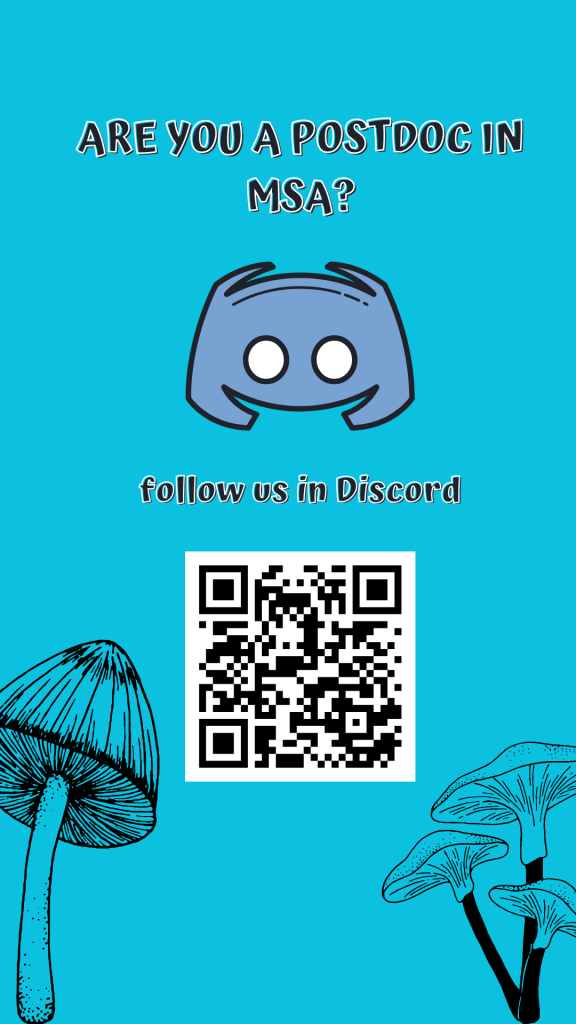
Are you a postdoc in the Mycological Society of America? Then, we’d love for you to join our MSA Postdocs Discord community! Follow the link below to join:
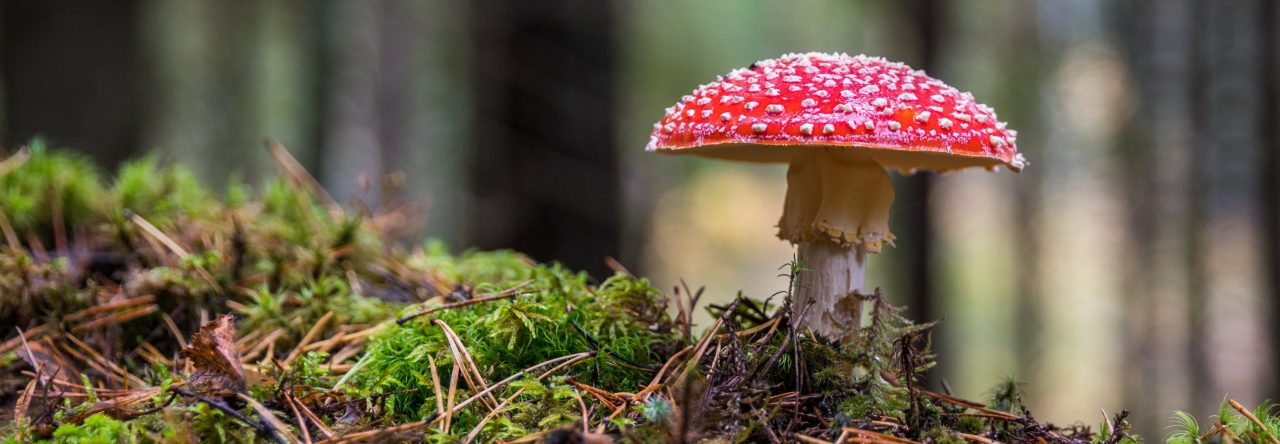
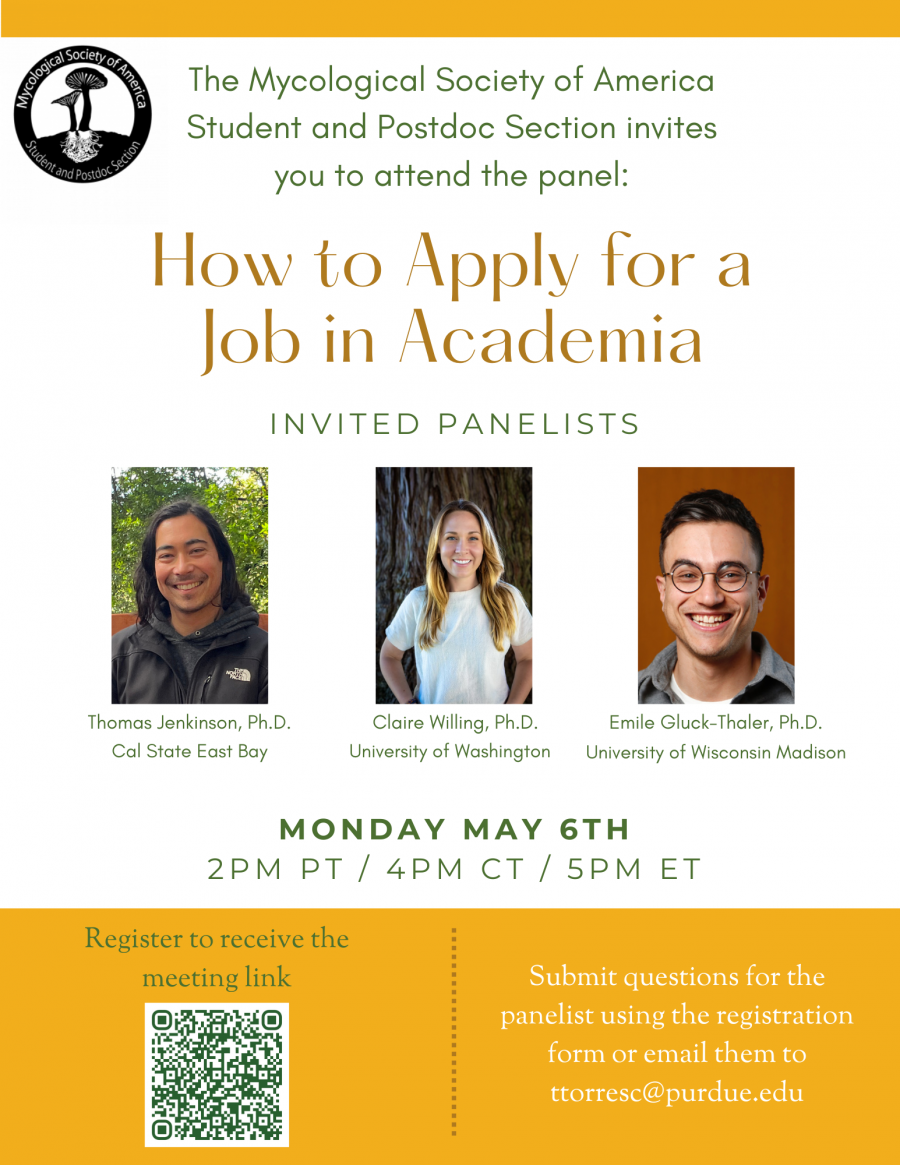
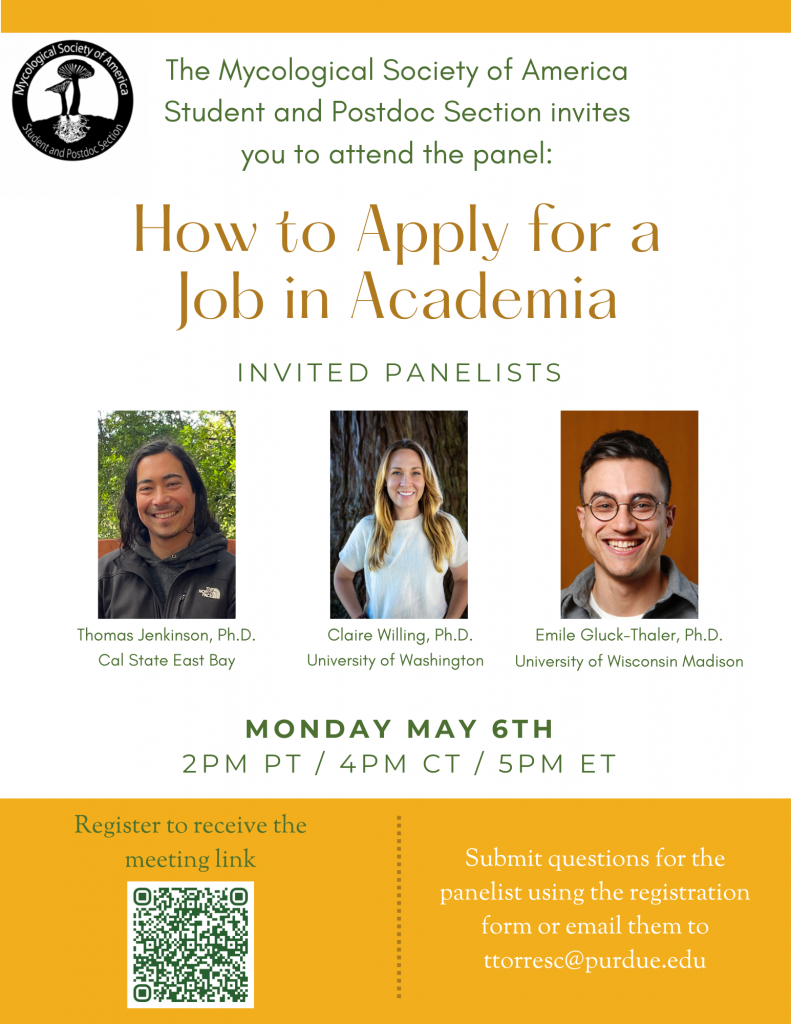
How do you apply for jobs in academia? Join our panel of early career academics on Monday, May 6 at 5 pm ET (2 pm PT) as they discuss their experiences with employment after completing their Ph.D.
To attend this meeting, you must register in advance.
Submit questions to the panelists using the registration form or email questions to ttorresc@purdue.edu
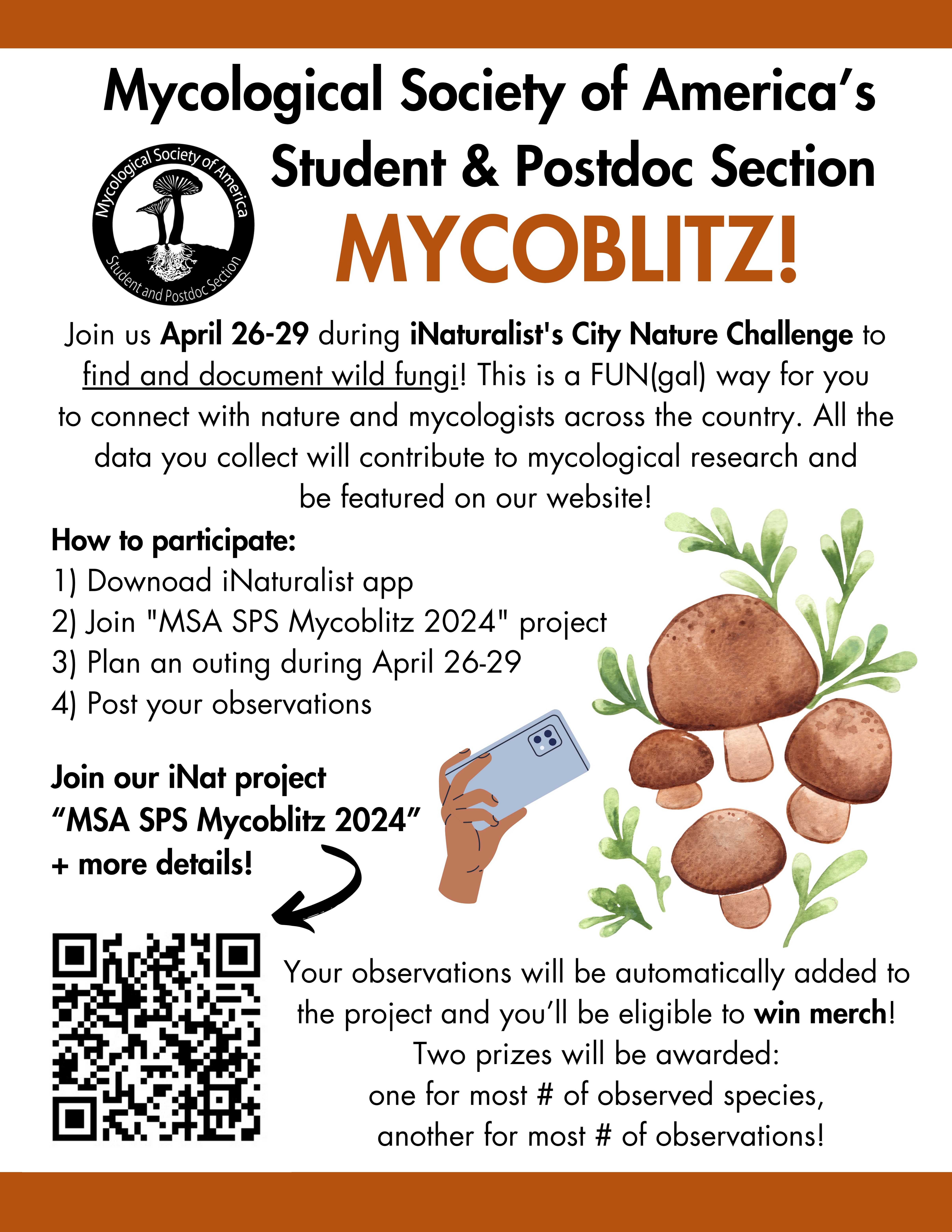
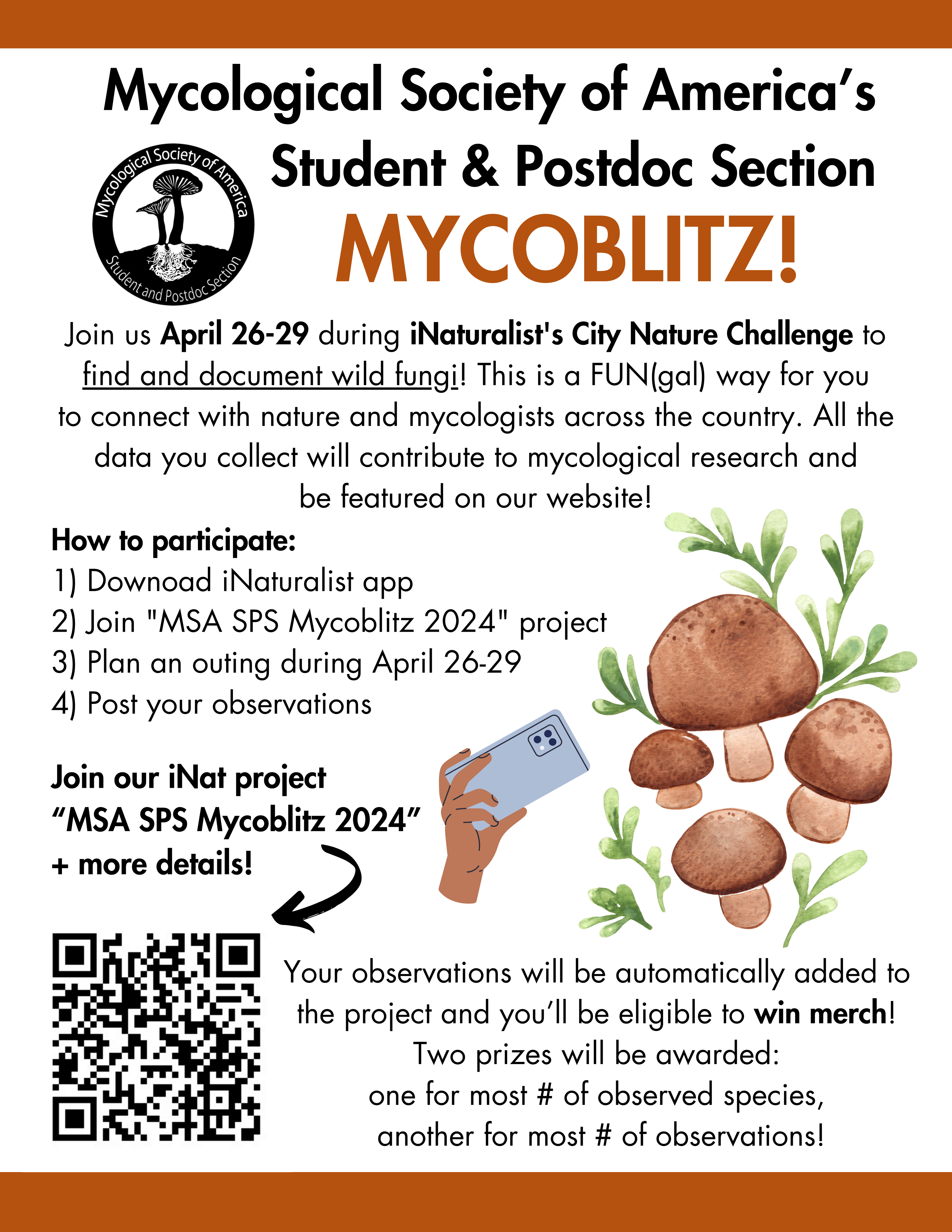
Join us April 26-29 during iNaturalist’s City Nature Challenge to find and document wild fungi! This is a fun(gal) and accessible way for you to connect with nature and mycologists across the country. Ultimately, all the data you collect will be pooled and usable for mycological research!
How to participate:
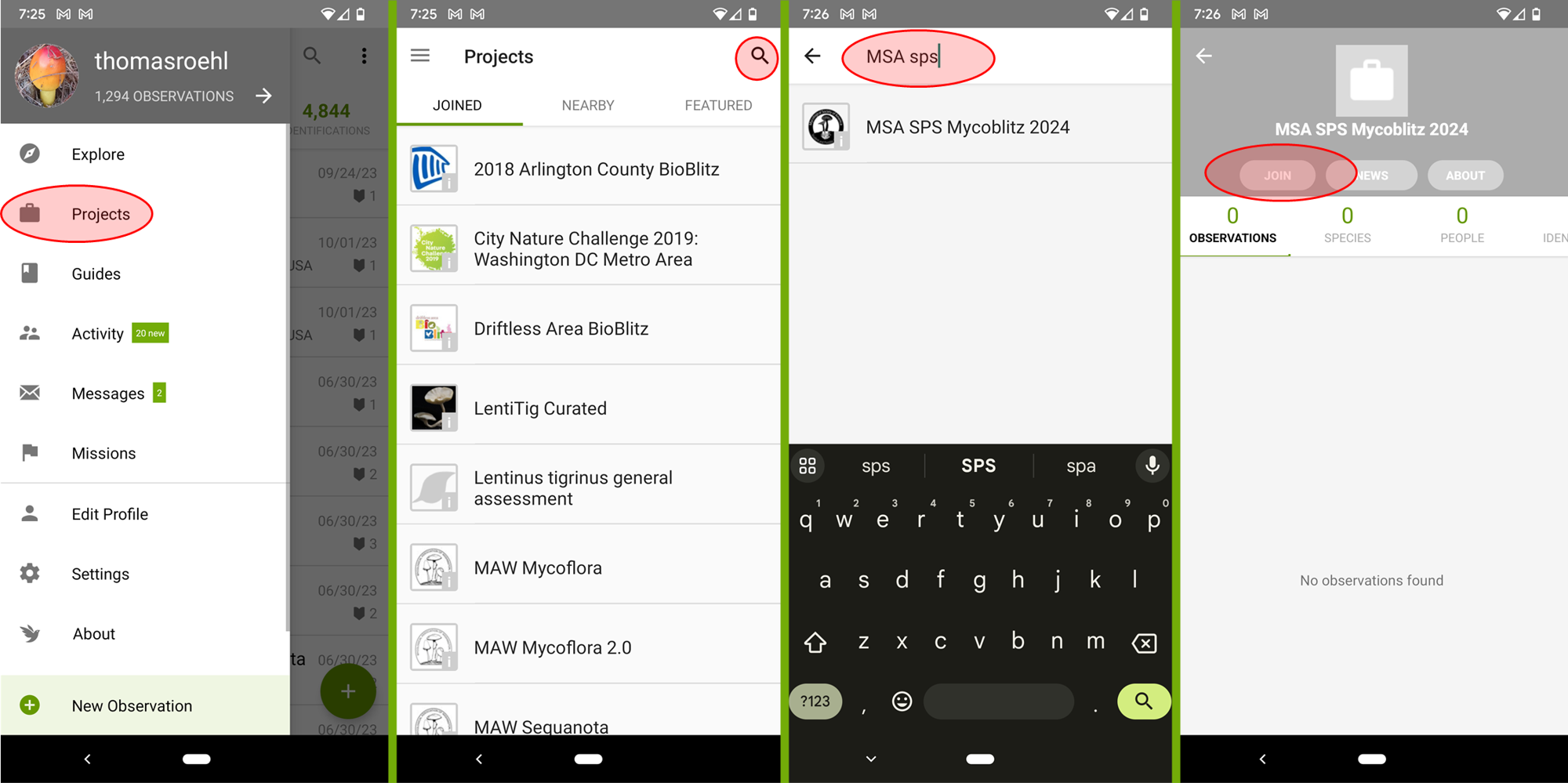
That’s all! Your observations will be automatically added to the project and you will be eligible to win one of these prizes of MSA swag:
Want more MSA merchandise? Check out our Bonfire store!
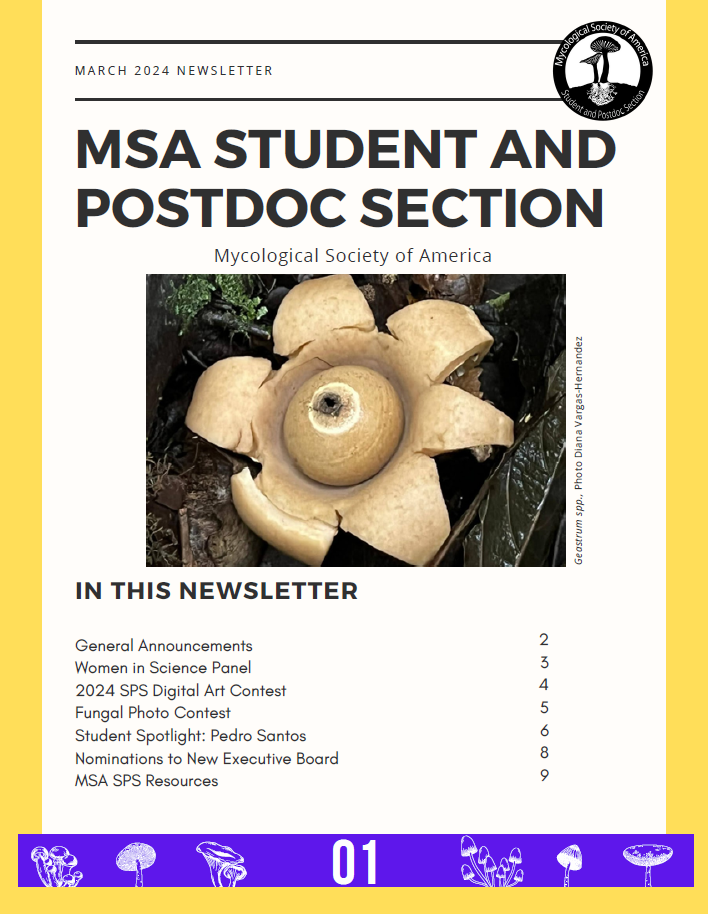
In this issue:
2 – General Announcements
3 – Women in Science Panel
4 – 2024 SPS Digital Art Contest
6 – Student Spotlight: Pedro Santos
8 – Executive Board Nominations
9 – MSA SPS Resources
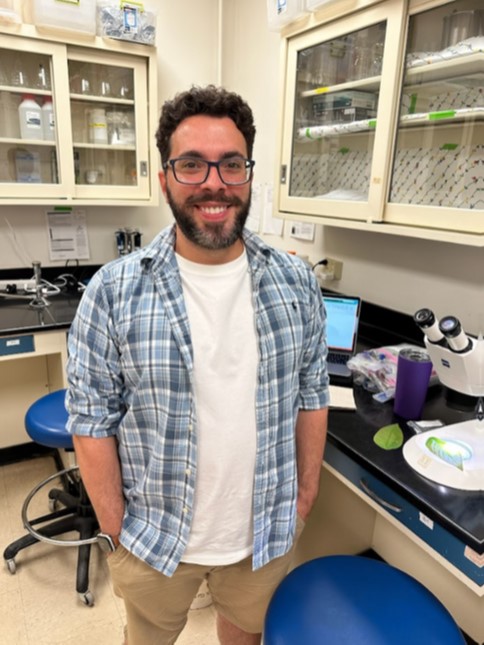
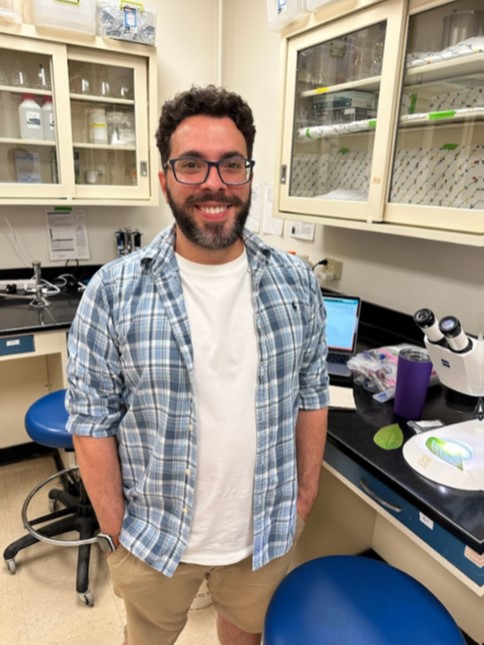
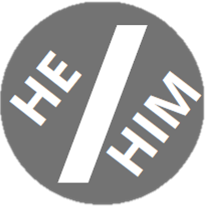





Rio de Janeiro Brazil
Louisiana State University
Vinson Doyle, Jonathan Richards and Sara Thomas-Sharma
In my research project, my focus is on delving into the complexities of Cercospora cf. flagellaris, a pivotal player in Cercospora leaf blight (CLB) disease in soybeans. With a host range which extends from agriculture to nonagricultural plants, C. cf. flagellaris challenges conventional notions of host specificity. My investigation comprises two primary objectives: firstly, conducting a comprehensive analysis of the pathogen’s dispersal dynamics and population structure. This involves strategic sampling across soybean producing states and utilizing whole-genome sequencing to unravel genetic diversity and adaptation strategies. Secondly, I aim to explore the genomic signatures of adaptation within C. cf. flagellaris. This includes creating annotated reference genomes from diverse host species to identify candidate genes associated with virulence and pathogenicity. Through this research, I aim to deepen our understanding of the pathogen’s responses, contributing crucial insights for effective disease management in soybean production
My career goal is to establish myself as a Professor/Researcher, aspiring not only to make significant scientific contributions but also to play a pivotal role in cultivating the next generation of scientists. I am driven by the passion to foster a learning environment where budding researchers not only ask insightful questions but also gain the expertise to navigate the intricate process of developing those questions into impactful research projects. My vision extends beyond personal accomplishments to encompass the mentorship and guidance of emerging talents, equipping them with the skills and mindset essential for advancing scientific knowledge and making meaningful contributions to their respective fields.
From my journey in mycology, I’ve gleaned not only knowledge about fungi but also a profound appreciation for the interconnectedness of scientific disciplines. My initiation into mycology marked my foray into the realm of science, serving as a gateway to diverse fields such as bioinformatics and plant breeding. What captivates me is the versatility of fungi, their ability to heal, decompose, cause damage and diseases. Mycology has instilled in me a keen sense of observation, emphasizing the importance of scrutinizing details with precision. This skill, akin to looking through an accurate lens, has proven invaluable in shaping my approach as a scientist, enabling me to delve deeper into various scientific domains with a discerning eye.
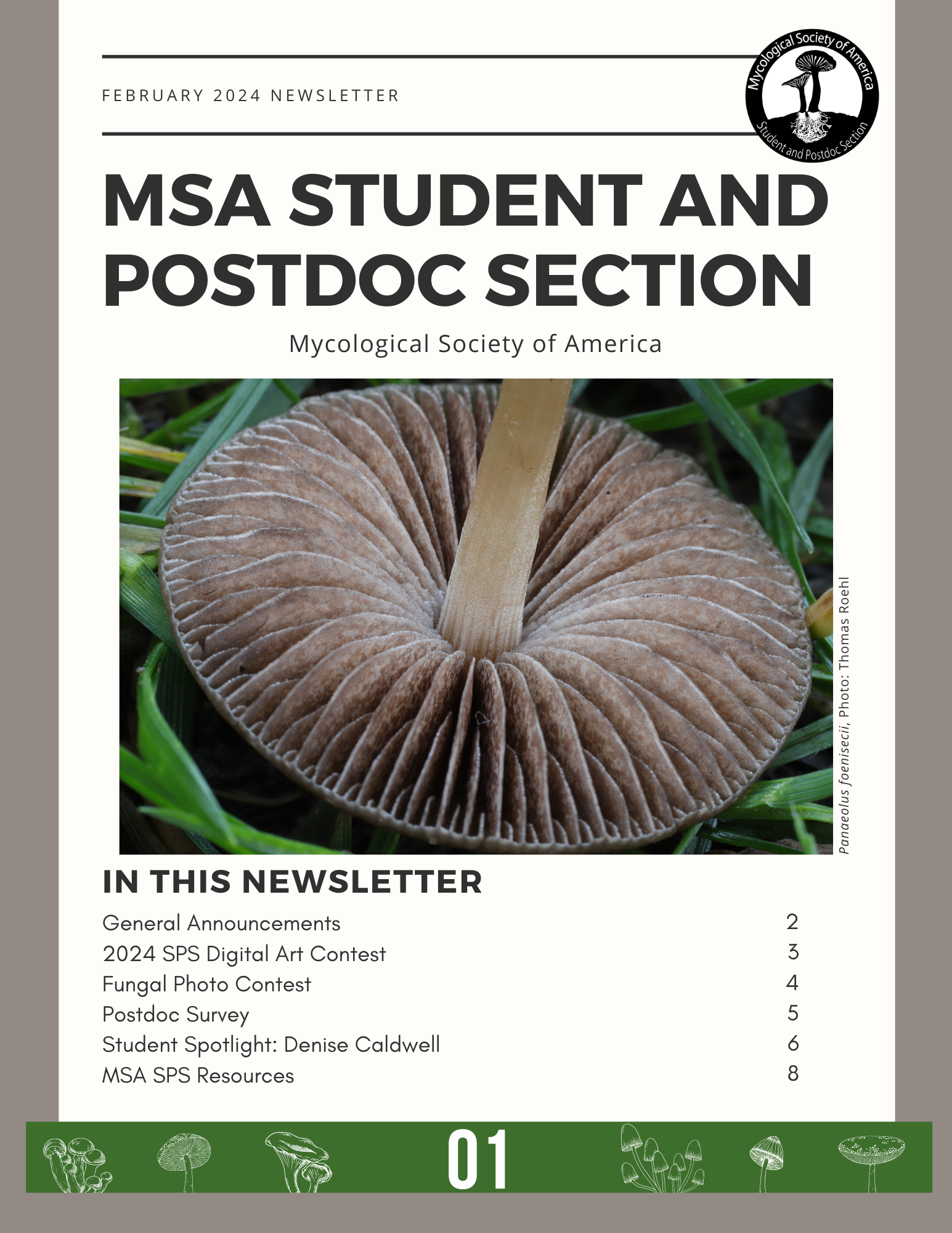
2 – General Announcements
3 – 2024 SPS Digital Art Contest
5 – Postdoc Survey
6 – Student Spotlight: Denise Caldwell
8 – MSA SPS Resources
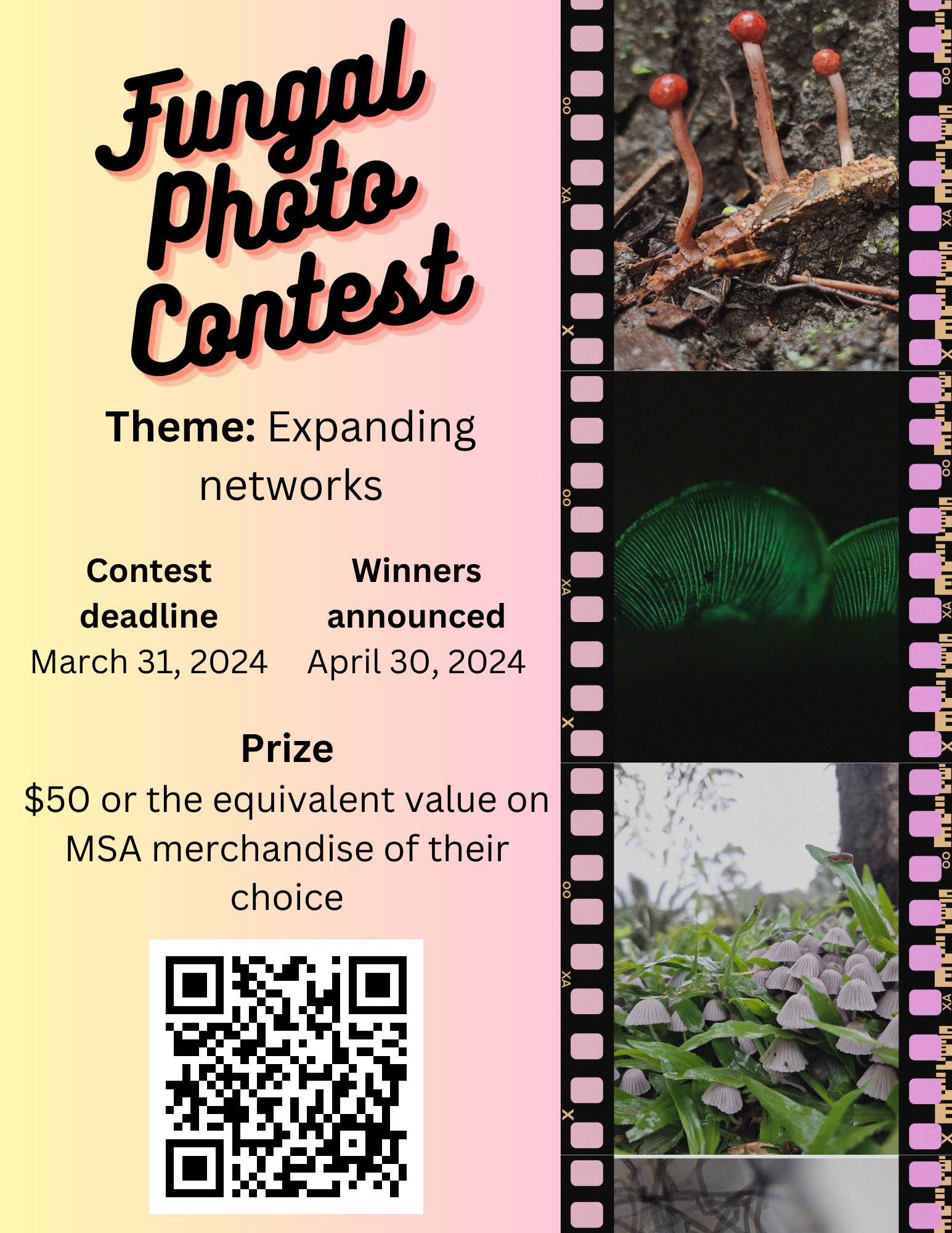
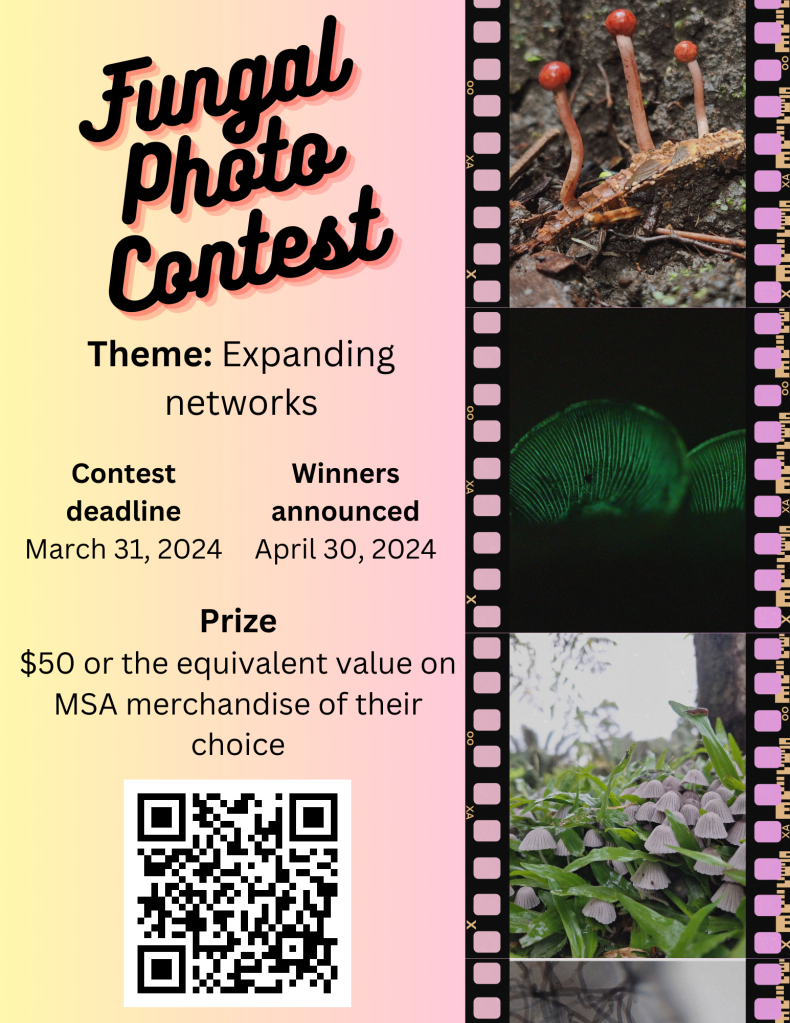
The Mycological Society of America Student and Postdoc Section (MSA–SPS) is excited to announce our Photo Contest open to ALL members of the MSA–SPS community (students, post-docs, professors, and fungal enthusiasts).
Goal: The winning photos will be featured on MSA-SPS Newsletter’s front page and social media posts. The goal is to share our passion for the Fungal Kingdom and increase science communication among the MSA–SPS community and the general public.
Theme: Expanding networks
Submissions: Open from March 1st to March 31st, 2024. Submit your photos using this Google Form.
Winners will be announced at the end of April 2024
Award: $50 or the equivalent value on MSA merchandise of your choice! The winning photos will additionally be shared with the MSA–SPS community.
All entries and rights to the photography remain the property of the participant unless a separate written transfer and payment for the original have been negotiated. Still, we have the right to use the image for social media posts and inclusion on the front page of the MSA-SPS newsletter, as stated above.
If you have any questions, please feel free to contact our communications chair: Diana Vargas at diana.vargas@ndsu.edu
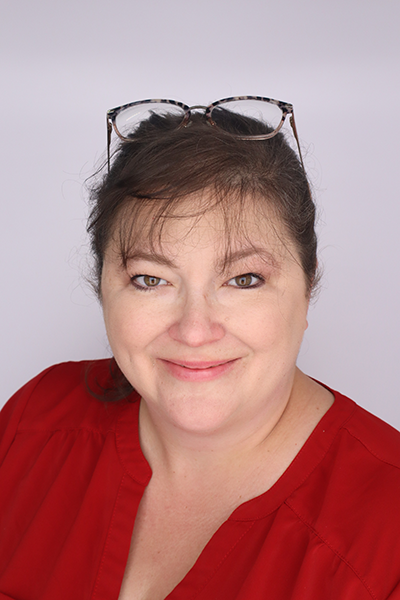
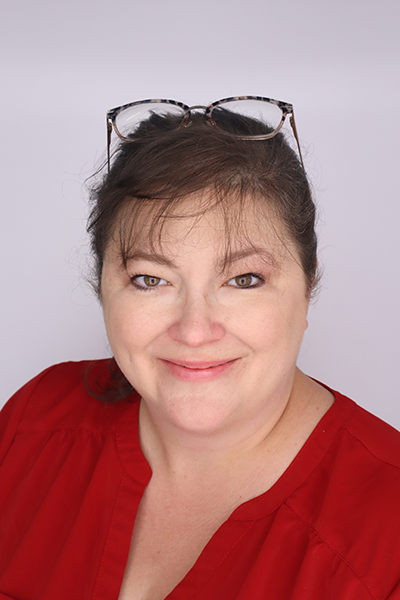






Monticello, Indiana
Purdue University
Dr. Anjali Iyer-Pascuzzi
I have been working on uncovering how Phyllachora maydis colonizes maize leaf tissue.
The one in which I am the proudest is the Purdue University College of Agriculture Mentoring Award.
I am waiting to see what avenues open up to me once that time gets closer.
Phyllachora maydis, undoubtedly! While my usual focus is on bacteria, the moment I observed the meticulous arrangement within what I initially perceived as a cluster of dead leaf tissue under the microscope, it left me utterly amazed. Complex reproductive structures unfolded within the lesion, an intriguing manifestation of Phyllachora maydis‘s remarkable adaptability and biological ingenuity.
In the remarkable adaptability of fungi lies a valuable lesson for us—a reminder that, just like these organisms, we too should embrace and learn from the art of adaptation.
Dr. Catherine Aime
Despite my outward appearance of chaos, a hidden layer of highly organized structure lies beneath.
I like to spend time with my family.
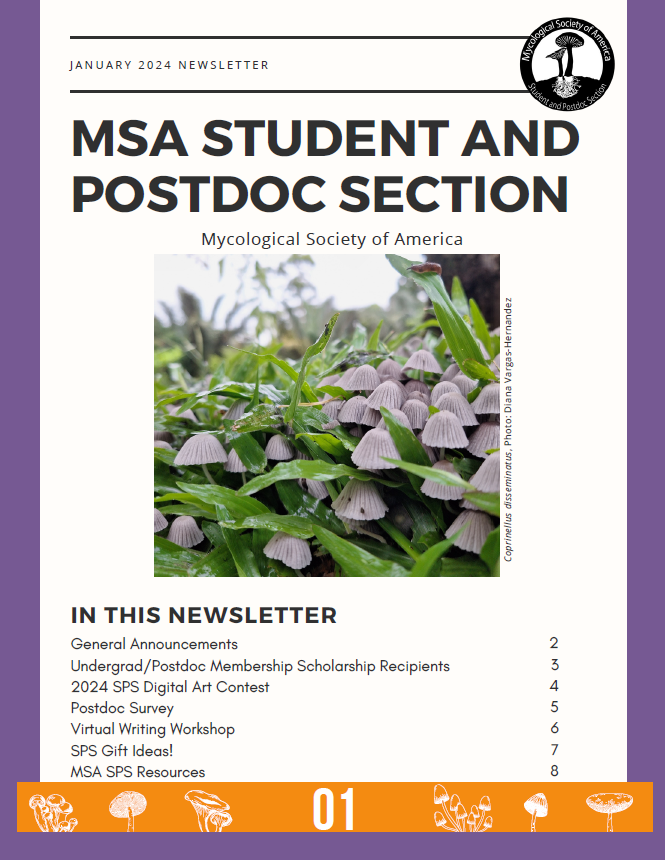
2 – General Announcements
3 – Undergrad/Postdoc Membership Scholarship Recipients
4 – 2024 SPS Digital Art Contest
5 – Postdoc Survey
6 – Virtual Writing Workshop
7 – SPS Gift Ideas!
8 – MSA SPS Resources
Powered by WordPress & Theme by Anders Norén